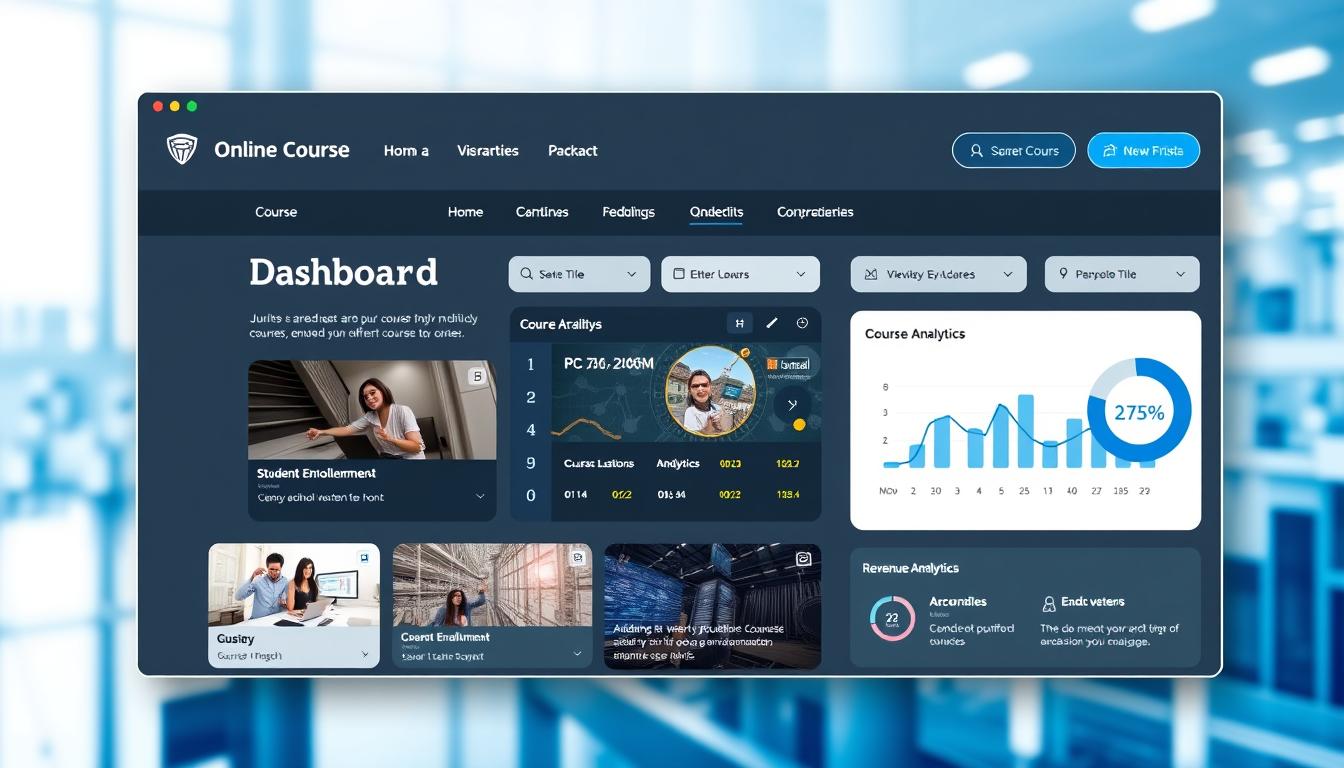Choosing the right platform for your online course can make all the difference in your success as a creator. With so many options available, it’s essential to compare the top contenders to find the best fit for your needs. In 2025, two platforms stand out: Thinkific and Teachable.
Both platforms are popular among educators and entrepreneurs, offering tools to create, market, and sell courses. This article dives into a detailed comparison of their features, pricing, and usability. Whether you’re a beginner or an experienced course creator, this guide will help you decide which platform aligns with your goals.
We’ll explore key aspects like course creation, mobile app availability, and customer support. By the end, you’ll have a clear understanding of the strengths and weaknesses of each platform. Let’s get started!
Key Takeaways
- Both platforms are widely used for creating and selling online courses.
- Pricing plans vary, with options for beginners and advanced users.
- Thinkific offers robust marketing and community features.
- Teachable is known for its beginner-friendly course builder.
- Both platforms provide customizable landing pages and digital download support.
Introduction and Evaluation Process
Finding the ideal platform for your online course can shape your success as a creator. With so many options available, it’s essential to compare the top tools to find the best fit for your needs. This section explains why this comparison matters and how we conducted our evaluation.
Why This Comparison Matters
For course creators, choosing the right platform is a critical decision. It affects everything from course design to student engagement. By comparing the features, pricing, and usability of leading platforms, you can make an informed choice that aligns with your goals.
Our goal is to provide a clear, unbiased review to help you decide which platform suits your needs. Whether you’re a beginner or an experienced creator, this comparison will guide you toward the best option.

How We Conducted the Evaluation
Our evaluation process is thorough and transparent. We tested each platform’s features, analyzed user feedback, and reviewed pricing plans. Our criteria included ease of use, customization options, and marketing tools.
We also drew on years of experience and research from trusted sources like SellCoursesOnline. This ensures our review is based on up-to-date information and real-world testing. Below is a summary of our evaluation criteria:
| Criteria | Description |
|---|---|
| Ease of Use | How intuitive and beginner-friendly the platform is. |
| Customization | The ability to tailor the course design and branding. |
| Marketing Tools | Features for promoting and selling your course. |
| Pricing | Costs and transaction fees associated with each plan. |
Our review is unbiased and designed to help you make the best decision for your course creation journey. Let’s dive deeper into the features and benefits of each platform in the next section.
Overview of Online Course Platforms in 2025
As we step into 2025, the e-learning landscape continues to evolve rapidly. The online course market is projected to reach $375 billion, driven by increasing demand for flexible and accessible education. This growth has led to significant advancements in course platform capabilities, making it easier for creators to design, market, and sell their content.

E-Learning Trends in 2025
One of the most notable trends is the rise of personalized learning experiences. Platforms are now integrating AI-driven tools to tailor content to individual student needs. Additionally, mobile learning has become a priority, with many platforms offering native apps for seamless access on the go.
Another key trend is the focus on community-building features. Creators are leveraging forums, live sessions, and interactive tools to foster engagement and retention. As
John Doe, an e-learning expert, states, “The future of online education lies in creating immersive and interactive experiences.”
Platform Growth and Market Dynamics
The competition among course platforms is fiercer than ever. Platforms like teachable are investing heavily in user-friendly interfaces and advanced marketing tools. Meanwhile, others are focusing on customization and integration capabilities to stand out in the crowded market.
Customer demand for seamless experiences is shaping the industry. Features like drag-and-drop builders, real-time analytics, and secure payment gateways are now standard. As the market grows, platforms that prioritize innovation and user satisfaction are likely to lead the way.
Comparing Thinkific vs. Teachable: A Feature Breakdown
When it comes to creating online courses, the features of your chosen platform can make or break your success. Both platforms offer unique tools designed to help creators build, market, and sell their content effectively. Let’s dive into the key differences and innovations that set them apart.
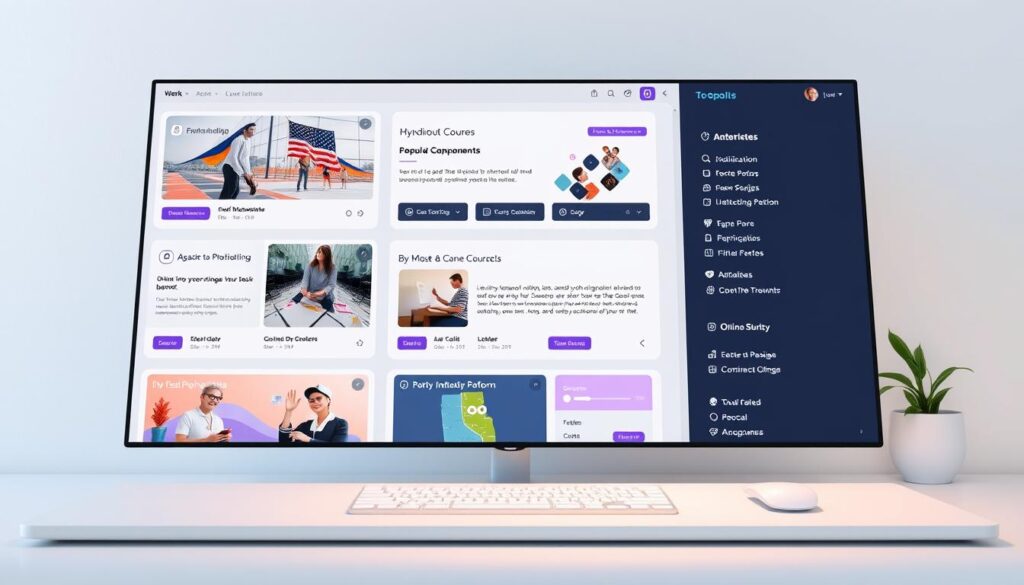
Key Feature Differences
One of the standout features of Thinkific is its extensive video library, which allows creators to upload and organize multimedia content seamlessly. On the other hand, Teachable is known for its streamlined interface, making it an excellent option for beginners.
Thinkific offers advanced customization options, enabling creators to design unique course pages. Teachable, however, focuses on simplicity, with drag-and-drop builders that require minimal technical knowledge. Both platforms support unlimited courses and students, but Thinkific stands out with its zero transaction fees across all plans.
Technology Innovations and Updates
In 2025, both platforms have embraced AI-driven tools to enhance the learning experience. Thinkific has integrated AI to personalize course recommendations, while Teachable uses AI to optimize course delivery and engagement.
Mobile accessibility is another area of innovation. Teachable offers a native mobile app, allowing students to access courses on the go. Thinkific, while lacking a dedicated app, ensures its platform is fully responsive on mobile devices.
As the e-learning industry evolves, both platforms continue to update their technology. Thinkific has introduced advanced analytics for tracking student performance, while Teachable has enhanced its marketing tools with email integration and affiliate program support.
Ease of Use and User Experience
The user experience of an online course platform plays a pivotal role in how effectively creators can manage their content. A well-designed interface and intuitive navigation can save time and reduce frustration, allowing creators to focus on what matters most—their students.

Intuitive Interface Design
Both platforms excel in offering user-friendly interfaces, but they cater to different needs. One platform is known for its drag-and-drop builder, making it easy for beginners to design courses without technical expertise. The other focuses on advanced customization, allowing creators to tailor every detail of their course pages.
For example, bulk editing capabilities are a standout feature, enabling creators to update multiple lessons or modules simultaneously. This saves time and ensures consistency across the course.
User Navigation and Dashboard
Navigation is another critical factor. One platform’s dashboard is streamlined, with all essential tools accessible in just a few clicks. The other, while powerful, may require more steps to achieve the same tasks. This difference can impact how quickly creators can onboard and manage their courses.
“A friendly design not only enhances usability but also boosts creator satisfaction,” says an e-learning expert. Features like single-page checkouts and integrated payment systems further simplify the process for both creators and students.
Ultimately, the choice depends on your preferences. If you value simplicity and speed, one platform may be the better plan. If you prioritize customization and control, the other might suit you best.
Course Creation and Engagement Capabilities
Creating engaging and interactive courses is essential for keeping students motivated and achieving learning outcomes. Both platforms offer robust tools to simplify the process, but their approaches differ significantly. Let’s explore how they handle course creation and student engagement.

Drag-and-Drop Course Builders
One platform stands out with its intuitive drag-and-drop builder, making it easy for beginners to design courses. Users can upload various content types, including video, PDFs, and audio files, without needing technical skills. This feature saves time and ensures a smooth course creation process.
The other platform offers advanced customization options, allowing creators to tailor every aspect of their course pages. While it requires a bit more effort, the flexibility it provides is unmatched. Both platforms support bulk editing, enabling creators to update multiple lessons simultaneously.
Interactive Learning Features
Interactive elements like quizzes, assignments, and surveys are crucial for student engagement. One platform excels in this area, offering diverse question types, including multimedia options. This makes assessments more engaging and effective.
The other platform focuses on simplicity, with straightforward quiz tools that are easy to set up. Both platforms support drip content, allowing creators to release lessons over time. This keeps students engaged and motivated throughout the course.
Additional tools like native integrations with exam solutions and interactive video capabilities further enhance the learning experience. These features make it easier for creators to deliver high-quality content that meets student needs.
Design and Customization Options
Design and customization are critical for creating a professional and engaging online course. A well-branded platform not only attracts students but also builds trust and credibility. Both platforms offer tools to customize sales pages and branding, but their approaches differ.
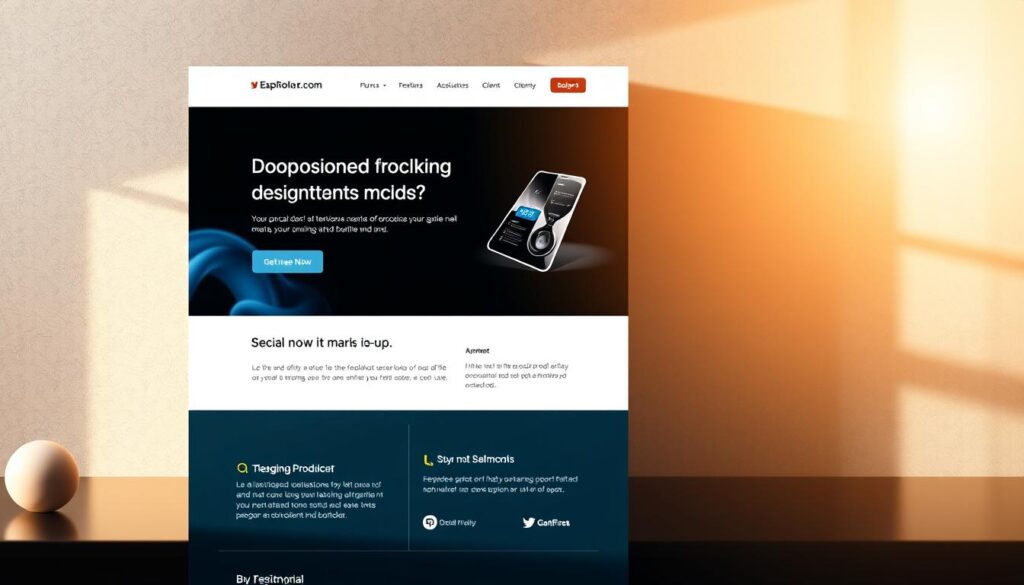
Sales Page and Branding Tools
One platform provides extensive customization options for sales pages, allowing creators to design unique layouts. You can add custom logos, banners, and call-to-action buttons to align with your brand. Pre-designed templates make it easy to create clean, modern pages without technical skills.
The other platform focuses on simplicity, offering drag-and-drop builders for quick setups. While it may lack advanced customization, it’s ideal for beginners who want to get started fast. Both platforms enable you to enhance your marketing efforts by creating visually appealing sales pages.
- Custom logos and banners for brand consistency.
- Pre-designed templates for quick and professional layouts.
- Call-to-action buttons to drive conversions.
- Flexible designs to match your brand’s aesthetic.
Enhanced branding options can significantly improve your sale performance. For example, a cohesive design across your course pages and marketing materials creates a seamless experience for students. This builds trust and encourages enrollment.
If you’re looking for more tips on creating effective sales pages, check out this free course guide. It’s a great resource for optimizing your pricing strategy and boosting conversions.
In summary, both platforms offer robust tools for customization, but your choice depends on your needs. Whether you prioritize advanced design or simplicity, these options ensure your course stands out in a competitive market.
Pricing Structures and Transaction Fees
Understanding the pricing structures of online course platforms is crucial for maximizing your earnings. Whether you’re a beginner or an experienced creator, choosing the right plan can significantly impact your revenue. Let’s break down the options to help you make an informed decision.
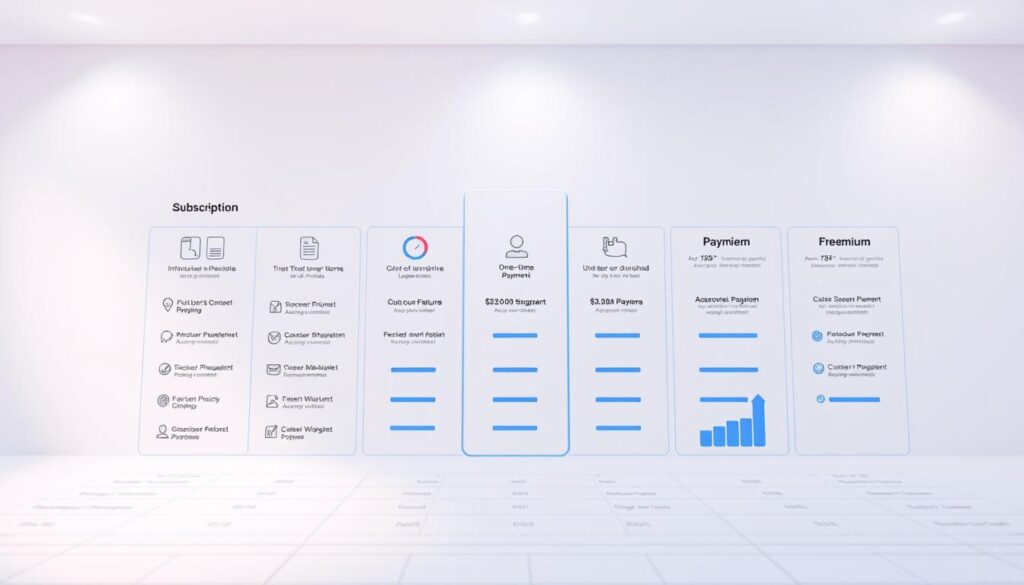
Free vs. Paid Plans Comparison
Both platforms offer free and paid plans, but their features vary. One platform provides a free plan with no transaction fees, making it ideal for creators who want to maximize profits. However, it limits you to one course. The other offers a free plan with built-in product options like courses, coaching, and digital downloads, but charges transaction fees on lower-tier plans.
Paid plans cater to different needs. One platform’s basic plan starts at $36/month, while the other begins at $39/month. Higher tiers unlock advanced features like unlimited courses, custom domains, and community-building tools. Consider your goals and budget when choosing a plan.
Transaction Fees and Their Impact
Transaction fees can eat into your profits, especially if you’re just starting. One platform charges fees on lower-tier plans, while the other offers fee-free options across all tiers. For example, if you earn $1,000 in sales, a 5% transaction fee would cost you $50. Over time, these fees add up.
Here’s a quick comparison of what’s included in each pricing tier:
- Basic Plan: Unlimited courses, digital downloads, and email support.
- Pro Plan: Advanced analytics, affiliate marketing, and seamless integration with third-party tools.
- Business Plan: Custom onboarding, priority support, and enhanced community features.
By understanding these details, you can choose a plan that aligns with your needs and maximizes your earnings. Whether you prioritize affordability or advanced features, both platforms offer options to help you succeed.
Sales and Marketing Functionality
Effective sales and marketing tools are essential for scaling your online course business. Both platforms provide robust features to help creators promote and sell their content. From affiliate programs to email campaigns, these tools can significantly boost your revenue and outreach.
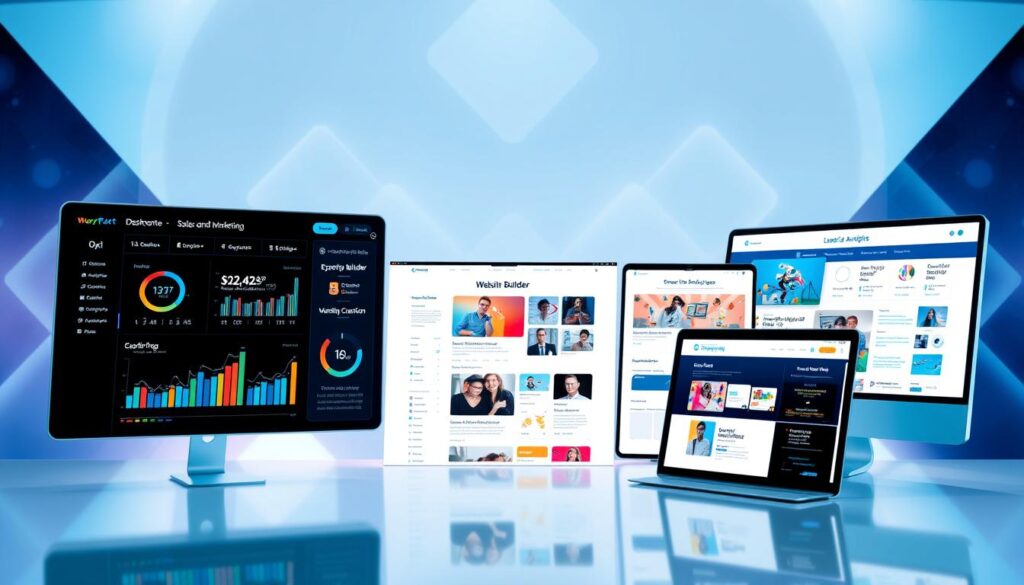
Affiliate Programs and Checkout Experience
Affiliate programs are a powerful way to expand your reach. One platform excels with its advanced affiliate tracking system, allowing creators to monitor performance and payouts seamlessly. This feature is ideal for those looking to leverage partnerships for growth.
The checkout experience is equally important. One platform offers a streamlined, single-page checkout process, making it easy for students to purchase courses. The other requires account creation before payment, which can add friction but ensures better data collection for follow-ups.
Here’s a quick comparison of their sales features:
| Feature | Platform A | Platform B |
|---|---|---|
| Affiliate Tracking | Advanced, real-time tracking | Basic, manual setup |
| Checkout Process | Single-page, fast | Account creation required |
| Automated Tax Processing | Available for EU sales | Manual tax setup |
Email Integration and Campaign Tools
Email marketing is a cornerstone of successful course promotion. One platform integrates seamlessly with popular email tools, enabling automated campaigns and personalized outreach. This helps creators nurture leads and keep students engaged.
The other platform offers built-in email features, though they are more basic. While it lacks advanced automation, it’s sufficient for creators who prefer simplicity. Both platforms allow you to schedule campaigns and track performance, ensuring your marketing efforts are effective.
Key email features include:
- Automated workflows for lead nurturing.
- Personalized email templates for better engagement.
- Performance analytics to refine your campaigns.
By leveraging these tools, you can create a marketing strategy that drives conversions and builds long-term relationships with your audience.
Mobile Accessibility and App Availability
Mobile accessibility is a game-changer for online education in 2025. With students increasingly relying on smartphones and tablets, having a mobile-friendly platform is no longer optional. Both platforms offer unique solutions to enhance learning on the go, but their approaches differ significantly.

Native Mobile App Options
One platform supports both Android and iOS, ensuring broad accessibility for users. This dual-platform approach allows creators to reach a wider audience, regardless of device preference. The app’s intuitive design makes it easy for students to navigate courses, watch videos, and complete assignments seamlessly.
In contrast, the other platform focuses solely on iOS, offering a streamlined experience for Apple users. While this limits accessibility for Android users, the app’s offline viewing feature is a standout benefit. Students can download lessons and study without an internet connection, making it ideal for on-the-go learning.
Usability and Accessibility
Mobile usability is critical for student engagement. A basic app ensures smooth navigation, while advanced features like push notifications keep students updated on new content. Both platforms prioritize user-friendly interfaces, but one offers more customization options for creators.
“Mobile apps are transforming how students interact with online courses,” says an e-learning expert. “Accessibility and convenience are key to modern education.”
Here’s a quick comparison of their mobile features:
| Feature | Platform A | Platform B |
|---|---|---|
| Platform Support | Android & iOS | iOS Only |
| Offline Viewing | Not Available | Available |
| Push Notifications | Yes | Yes |
By leveraging these mobile tools, creators can ensure their courses are accessible and engaging for students worldwide. Whether you prioritize broad compatibility or advanced features, mobile accessibility is a must in today’s e-learning landscape.
Third-Party Integrations and Extensions
Third-party integrations are a game-changer for course creators looking to enhance their platform’s functionality. These tools allow you to connect your platform with external services, expanding its capabilities and streamlining your workflow. Whether you’re managing marketing campaigns, processing payments, or analyzing data, integrations can save time and improve efficiency.

Why Integrations Matter
For course creators, integrations are essential for scaling your business. They enable you to automate tasks, track performance, and deliver a seamless experience to your students. Over the year, these tools can help you adapt to changing needs and stay competitive in the e-learning market.
Popular integrations include marketing tools like ConvertKit and Mailchimp, which simplify email campaigns. Payment gateways like Stripe and PayPal ensure secure transactions, while reporting tools like Google Analytics provide valuable insights into student behavior.
Customization and Flexibility
One of the biggest advantages of third-party integrations is their custom nature. You can tailor these tools to fit your specific needs, whether you’re managing a small course or a large-scale program. For example, Zapier allows you to create automated workflows between apps, saving hours of manual work.
Integrations also support advanced features like affiliate tracking and tax management. These capabilities are particularly useful for course creators who operate internationally or offer subscription-based services.
Real-World Examples
Many course creators have successfully leveraged integrations to grow their businesses. For instance, one creator used ConvertKit to automate email sequences, resulting in a 20% increase in course enrollments. Another integrated Google Analytics to track student progress and improve course content over the year.
These examples highlight the transformative power of third-party tools. By choosing the right integrations, you can enhance your platform’s functionality and achieve your goals more efficiently.
Advanced Reporting and Analytics Tools
Advanced reporting and analytics tools are essential for course creators to track success and improve their offerings. These features provide valuable insights into student performance, engagement, and course effectiveness. By leveraging these tools, educators can make data-driven decisions to enhance their online courses.

Tracking Student Performance
One platform offers detailed analytics on student progress, including video watch tracking and individual progress reports. This allows instructors to identify areas where students may be struggling. For example, heatmaps show which parts of a video are most engaging, helping creators refine their content.
The other platform provides comprehensive reporting on quiz results and course completion rates. These metrics are crucial for understanding how well students are absorbing the material. By analyzing this data, educators can adjust their teaching methods to improve outcomes.
Customizable Reports and Insights
Customizable reports are a standout feature for many creators. One platform allows instructors to generate detailed revenue reports, showing income trends over time. This is particularly useful for tracking the success of marketing campaigns and pricing strategies.
The other platform offers advanced analytics, including video retention graphs and engagement metrics. These insights help creators optimize their course design and content delivery. For instance, if a specific lesson has low engagement, instructors can revise it to better meet student needs.
Both platforms provide actionable insights that empower educators to continuously improve their courses. Whether you’re a beginner or a pro, these tools are invaluable for achieving long-term success in the online education space.
Payment Processing and Tax Management
Efficient payment processing and tax management are critical for course creators. These features ensure secure transactions, timely payouts, and compliance with global tax regulations. Both platforms offer robust tools, but their approaches differ significantly.
Secure Payment Gateways and VAT Solutions
One platform integrates with Stripe, a popular payment gateway, to process transactions securely. This ensures fast and reliable payouts for creators. The other platform also supports Stripe but adds PayPal as an alternative, giving users more flexibility.
Tax management is another key area. One platform automates EU VAT MOSS, simplifying tax compliance for creators selling in Europe. The other requires manual setup but provides detailed guides to help users navigate tax regulations.

| Feature | Platform A | Platform B |
|---|---|---|
| Payment Gateways | Stripe | Stripe, PayPal |
| Tax Automation | EU VAT MOSS | Manual Setup |
| Transaction Fees | 0% on all plans | Varies by plan |
These features ensure creators can focus on their content while the platform handles the technicalities. Whether you prioritize automation or flexibility, both platforms offer reliable solutions.
For example, one creator saved hours by using automated tax tools, allowing them to reinvest time into course development. Another benefited from multiple payment options, increasing their global access to students.
By understanding these differences, you can choose the platform that best aligns with your needs. Efficient payment processing and tax management are essential for scaling your course business and maximizing your earnings.
Customer Support and Community Engagement
Reliable customer support and active community engagement are essential for course creators to thrive. Whether you’re troubleshooting issues or seeking advice, having access to responsive support and a vibrant community can make all the difference. Let’s explore how these platforms excel in these areas.

Live Chat and Support Options
When it comes to customer support, both platforms offer robust options. One platform provides live chat support starting on its Pro Plan, ensuring real-time assistance for creators. This feature is particularly useful during critical moments, such as course launches or technical issues.
The other platform includes live chat on all paid plans, with priority support available on higher tiers. This ensures that creators at any level can access help when needed. Response times are impressive, with most queries resolved within a number of hours.
Email support is also available across all plans, making it easy to get help even if live chat isn’t accessible. For those on a free trial, email remains the primary support channel, ensuring no one is left without assistance.
Community Resources and Forums
Community engagement is another area where these platforms shine. One platform hosts active forums where creators can share tips, ask questions, and collaborate. This peer support system is invaluable for both beginners and experienced creators.
The other platform offers a number of community resources, including webinars, guides, and templates. These tools help creators optimize their courses and stay updated on the latest trends. For example, an article on effective course design might provide actionable insights for improving student engagement.
Both platforms foster a sense of belonging among creators, encouraging knowledge sharing and collaboration. Whether you’re looking for feedback on your course or seeking inspiration, these communities are a goldmine of support.
In summary, customer support and community engagement are critical for course creators. Whether you prefer real-time chat or peer-driven forums, both platforms offer valuable resources to help you succeed. By leveraging these tools, you can focus on what matters most—creating impactful courses for your students.
Expert Verdict and Pros & Cons
Deciding between top online course platforms can be a game-changer for your educational business. Both platforms have unique strengths and weaknesses, making it essential to weigh their features carefully. Here’s a balanced expert verdict to help you make the right choice.
Thinkific Advantages
One platform shines with its flexible pricing plans, offering a free trial and zero transaction fees. This makes it a cost-effective option for creators at any level. Its advanced reporting tools provide detailed insights into student performance, helping you refine your courses for better results.
Another standout feature is its robust customization options. Creators can design unique course pages that align with their brand. This flexibility is ideal for those who want full control over their course design and marketing strategy.
Teachable Strengths
The other platform excels with its intuitive user interface, making it beginner-friendly. Its affiliate management tools are top-notch, helping creators scale their businesses effortlessly. Live chat support ensures quick resolution of issues, enhancing the overall user experience.
Teachable also offers a free trial, allowing creators to test its features before committing. Its one-page checkout process simplifies the purchasing experience for students, increasing conversion rates. These features make it a strong contender for creators focused on ease of use and scalability.
Here’s a quick comparison of their key features:
| Feature | Thinkific | Teachable |
|---|---|---|
| Pricing | Flexible, no transaction fees | Free trial, transaction fees on lower plans |
| Customization | Advanced options | Simple, beginner-friendly |
| Support | Email and live chat | Live chat on higher plans |
Ultimately, the best platform depends on your needs. If you prioritize customization and cost-effectiveness, one platform may be the better choice. If ease of use and affiliate tools are your focus, the other could be ideal. Both platforms offer unique benefits, ensuring success for creators at any level.
Conclusion
Selecting the best platform for your online course can transform your teaching journey. Throughout this article, we’ve explored key factors like features, pricing, and customer support. Both platforms offer unique strengths, making it essential to evaluate your specific needs before deciding.
If you prioritize advanced customization and zero transaction fees, one platform may be the better fit. For those seeking a beginner-friendly interface and robust affiliate tools, the other stands out. Each service provides excellent value, but your choice depends on your goals and budget.
Before committing, take advantage of free trials to test the platforms firsthand. This hands-on experience will help you determine which option aligns with your vision. Remember, thorough research ensures you make the best decision for your course creation journey.

